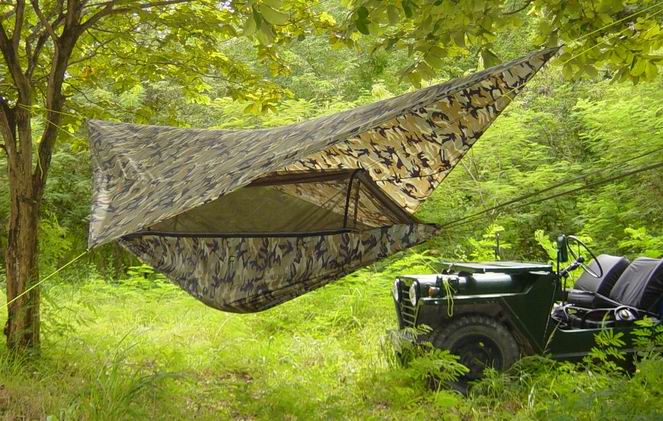 When some people think of a perfect summer day they visualize relaxing in a hammock that's lashed between two coconut trees on a tropical beach. It's not very surprising because hammocks originated in the West Indies. They were first seen several centuries ago by the Spanish conquistadors.
When some people think of a perfect summer day they visualize relaxing in a hammock that's lashed between two coconut trees on a tropical beach. It's not very surprising because hammocks originated in the West Indies. They were first seen several centuries ago by the Spanish conquistadors.The word hammock comes from an Arawakan word that means "fish net". Hammocks were originally woven from the bark of a hamack tree. Later sisal fibers replaced the hamack bark because sisal was considerably more plentiful.
Europeans saw their first hammocks when Christopher Columbus brought a number of them back to Spain from what's now the Bahamas.
Hammocks are believed to have arrived in Mexico from the Caribbean less than two hundred years prior to the Spanish conquest. Since that time they have become so important to Yucatecans that even the poorest homes have hooks in the walls from which they can suspend hammocks for their family and guests.
Nowadays you'll often find several hammocks strung across the main rooms in rural El Salvador homes. Families there use hammocks for beds, seating, and as sleep swings for their babies.
One of the primary reasons that hammocks have been so popular in South and Central America through the years is because of the safety they provide from animal bites, insect stings, snakes, and other creatures.
The quality of a modern day hammock greatly depends on the quality of the material used to make the threads as well as the quantity of threads that are used.
The Venezuelan Jungle Hammock
One of the most intriguing types of hammocks is the Venezuelan jungle hammock.
One hundred years ago entire families in Venezuelan villages were raised in hammocks. At the turn of the twentieth century, explorers who ventured into the South and Central American jungles wouldn't be caught without their Venezuelan hammock. It was the only thing that would protect them from the venomous snakes and scorpions of the region while they slept.
Jungle hammock's panels then and now were made from a breathable material that prevents fungal infections that can be caused by incessant rain and high humidity. Over the course of time sand fly netting was added to the hammocks to further protect the occupants from flies, mosquitoes, and other bugs.
Then a rain fly - a water proof top sheet - became part of the design. A rain fly keeps the heavy night time rains from drenching people as they sleep.
"Drip strings" are also part of a jungle hammock. These are short strings that you hang from the suspension lines. They're an effective way to prevent rainwater from running from the tree trunks down the suspension cords and into the hammock.
In the jungle the suspension lines are also often soaked with insect repellent. This makes the hammock truly free of crawling insects.
And finally, a breathable bottom panel is usually added to a jungle hammock so the air can freely flow and keep the occupant comfortable while mosquitoes are blocked from biting.
Today you'll find jungle hammocks in the homes and backyards of even the most posh residents around the world.




0 comments:
Post a Comment